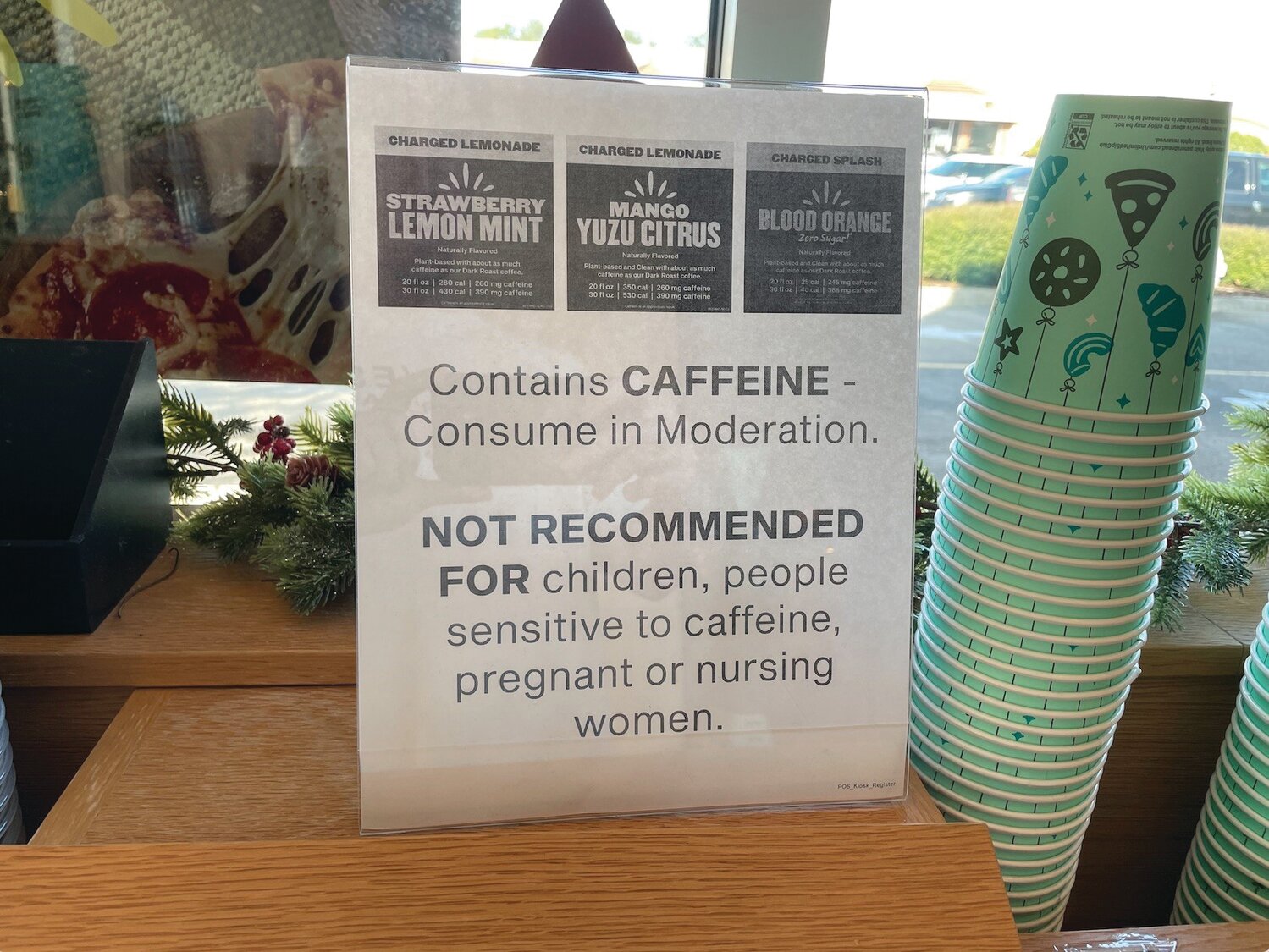Fleming Island family joins lawsuit against Panera Bread
Man drank three Charged Lemonades and died of cardiac arrest
FLEMING ISLAND – A local family filed a lawsuit against Panera Bread after 46-year-old Dennis Brown died after drinking three highly-caffeinated “Charged Lemonade” at the Fleming Island …
This item is available in full to subscribers.
Attention subscribers
To continue reading, you will need to either log in to your subscriber account, below, or purchase a new subscription.
Please log in to continueDon't have an ID?Print subscribersIf you're a print subscriber, but do not yet have an online account, click here to create one. Non-subscribersClick here to see your options for subscribing. Single day passYou also have the option of purchasing 24 hours of access, for $1.00. Click here to purchase a single day pass. |
Fleming Island family joins lawsuit against Panera Bread
Man drank three Charged Lemonades and died of cardiac arrest
FLEMING ISLAND – A local family filed a lawsuit against Panera Bread after 46-year-old Dennis Brown died after drinking three highly-caffeinated “Charged Lemonade” at the Fleming Island Shopping Center store.
David Brown and Denise Fuller alleged the drinks caused Brown’s cardiac arrest after the Fleming Island man left the store. According to the suit, they said the beverage contains “no warning of any potentially dangerous effects,”
According to the lawsuit, filed on Dec. 4 in the Superior Court of Panera’s Delaware by the same law firm, Kline & Specter, PC, that also represents the family of a 21-year-old University of Pennsylvania student, Susan Katz, after she died in 2022 after drinking a Charged Lemonade.
Panera is being sued for wrongful death and negligence. Brown, who was suspected of having a chromosomal deficiency disorder, developmental delays, some blurred vision, and a mild intellectual disability, consumed three drinks at the Fleming Island location on Oct. 9.
On his walk home, Brown suffered a cardiac arrest, and he died a short time later, the lawsuit reads.
Brown, who frequented the fast-casual restaurant, was not a consumer of energy drinks and believed the “Charged Lemonade” to be “safe” since it was not advertised as an energy drink, according to court documents. And while the product was also offered in the same location as the restaurant chain’s non-caffeinated and less-caffeinated beverages, Brown ordered Panera’s Charged Lemonade at least seven times in two weeks during September and October, the lawsuit reads.
“Defendants knew or should have known that the Panera Charged Lemonade, as designed and formulated, once consumed, could injure children, pregnant and breastfeeding women, and people sensitive caffeine to caffeine, causing catastrophic injuries and or death,” according to the Brown family lawsuit.
“Based on our investigation, we believe his unfortunate passing was not caused by one of the company’s products. We view this lawsuit filed by the same law firm as a previous claim to be equally without merit. Panera stands firmly by our products,” the company said in a release to NBC News.
Whether merit stands, one thing is for sure: the drinks contain caffeine – and loads of it.
According to Panera, a 20-ounce serving of Charged Lemonade contains 260 milligrams of caffeine, while a 30-ounce drink has 390 milligrams. The Food and Drug Administration said 400 milligrams a day won’t cause dangerous effects, as long as there aren’t issues with the way the body metabolizes it.
If Brown had three small Charged Lemonades, that’s 780 milligrams, while a large would be 1,170 milligrams. The FDA said rapid consumption of 1,200 milligrams by a healthy person is enough to cause toxic effects or seizures.
Dr. Jay Schauben, former Division Director of the Poison Center and Surveillance Services at the Florida/USVI Poison Information Center of Jacksonville and now acting Clinical Toxicologist for the agency, told Clay Today consumers should learn about safe levels of caffeine, especially those contained in energy drinks.
Caffeine in coffee is not metabolized differently from caffeine in energy drinks. “Caffeine is caffeine, and it doesn’t matter (what form). You can get it from powdered drinks, and coffee chemicals are handled in the same way,” he said.
The concentration level of caffeine that becomes toxic or lethal varies dramatically.
“It’s a very personal thing. Some (people) can tolerate very high dosages of caffeine, perhaps because they are younger, or maybe because they are a chronic user,” Schauben said. “But others react to the substance in an entirely separate scenario. Other individuals may react very negatively to smaller dosages of caffeine, perhaps even just one to two cups of coffee. These are very, very difficult questions to answer.”
Pre-existing conditions and medical concerns compound the risks, which potentially contributed to Brown’s death.
“An older (individual) or someone with a pre-existing nervous system or a heart condition are at much higher risk,” Schauben said.
Individuals with medical concerns, along with obesity and other factors, are at much higher risk and could see adverse effects of even normal dosages of caffeine. They should stay under the 400 milligrams a day, he said.
Schauben said those who consume caffeine daily, especially energy drinks, should heed caution.
“(You) just need to be cognizant of how much caffeine you drink,” he said.
Keeping track of dosages infused in energy drinks is important because caffeine content often trumps regular coffee, so buyers beware.
“People need to understand how much (caffeine content) they are taking in, based on the energy drink (product) they select. Some have higher amounts than others. You need to be careful when drinking higher dosages. It could result in adverse effects,” he said.
“People need to understand that caffeine is beneficial in some cases and can be quite dangerous in others, just like any drug on the market, whether it be prescription or over the counter. A small amount may (work) toward your benefit, but if you take much larger amounts, it can hurt you,” Schauben said.
People should schedule an appointment with their physician, Schauben said.
“That may be the best way to go if (you) have a concern on what (equates) to a safe amount,” he said. “That doctor (should be) clued in on your (medical history) and pre-existing medical conditions which may put you at risk. This is a very individualized thing.”












